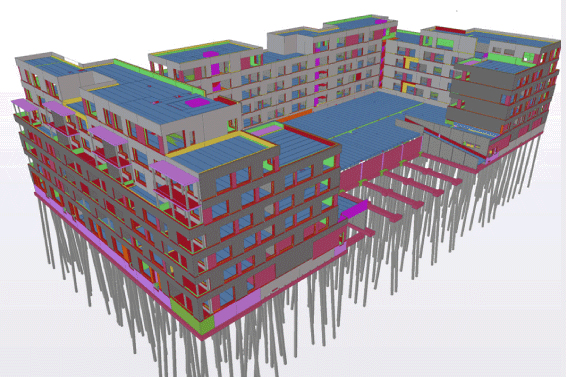The Pradhan Mantri Awas Yojana’s (PMAY) ‘Housing for All’ mission has been the buzz for the last three years. The mission seeks to build 18 million urban and 30 million rural houses by 2022. Yet, with just a little more than 36 months to go, the government has so far approved only 1.88 million urban houses, while roughly 103,000 have been built as of this April. Considering, another 3.3 million houses were to be built in 2017-2018 as per the original plan; housing for all appears to be pipe dream.
At its current pace, with a little over 100,000 houses built, it could take many more years to build our way out of the housing shortage.The speed of construction has become a major cause of concern, though with the recent The Real Estate Regulatory Authority (RERA) Act kicking in, it is expected that promise will be delivered upon. The RERA Act emphasises the need for timely completion of projects and adoption of modern technologies and it’s on the developer to ensure that the rules have been strictly followed to survive in the industry.
On the other hand, many experts have argued that one of the big reasons for slow progress in construction of new houses under the PMAY scheme is that very few large and organised real estate players are participating in this program, primarily due to low profit margins that accrue in affordable housing. The significant rise in the cost of labour and construction materials along with unavailability of construction workers has become a major contributor for the aforementioned cause.
In this scenario, conventional construction methods will be hard pressed to exploit the advantages of mass housing. It is evident that new construction technologies must be utilised to deliver homes fast with minimum labour and zero wastage of materials. The need for the adoption of technology enabled construction processes like precasting for example has become imperative for the completion of this ambitious mission.
Given the new requirement of 26.5 million affordable housing units in India, traditional ‘brick and mortar’ construction can effectively be replaced by precast construction, which has emerged as a preferred alternative to the conventional concrete-based construction practice across the world.
Simply put, precast concrete is a form of construction where concrete is cast in a reusable mould or form, which is then cured in a controlled environment, transported to the construction site and lifted into place to construct a building.
This technology is very similar to production in an automobile manufacturing environment, where parts of the vehicle are manufactured in different factories and the final product is assembled in given factory. Using precast technology, a majority of structural components of buildings (such as slabs, columns, beams, wall etc.) are standardised and produced in plants in a location away from the building site and then transported to the site for assembly. These components are manufactured by industrial methods based on mass production and this process enables construction of a higher number of buildings in a relatively shorter time and total cost of ownership is also lower, while the quality is also of a high order, given the efficiencies of the production processes.
Why precast
Compared with conventional cast-in-place (CIP) concrete systems, precast concrete is suitable for developing both conventional and modular structures of high quality. Precast is also eco-friendly and extremely safe, for the technology has passed rigorous safety standards around the world for seismic and structural testing and fire safety.
However, the biggest benefit that gladdens the industry’s heart is the reduction in overall construction costs by as much as 15 per cent. This alone should make precast technology the chosen method of construction for India’s ‘Housing for All’ initiative. The cost savings are a result of two unique and exclusive features of precast technology such as improved speed of delivery and ease of installation. Both these features contribute directly to lower total cost of ownership (TCO) and are unmatched by CIP or cast-in-situ concrete.
To certain sections of the industry, the initial investment in precast may appear higher as opposed to CIP concrete, but there is a significant reduction in overall expenditure through time saved, wastage avoided and consistent quality delivered with the finished product. Further savings in reinforcement and concrete are also possible due to the accurate production of precast concrete elements and the utilisation of slim building elements. These material savings decrease the overall production costs of precast concrete elements. In summary, the benefit of adopting precast construction far outweighs the initial challenges of changing existing practices.
Better quality, an important differentiator for precast concrete, is given when it is produced in certified plants with controlled batch proportions and under uniform conditions. As actual ‘construction’ happens in a controlled factory environment, issues caused by environmental factors like bad weather are also eliminated. The precast wall panels, which extend into a building’s footings, also make these buildings safer and they are coping better with fires or cases of water damage and accidental impact.
With all the advantages that precast technology brings to construction industry, it is surprising that this technology has not yet been deployed on a large scale for the ‘Housing for All’ mission.
Authored by
Paul Wallett,
Regional Director,
Trimble Solutions India
and Middle East
Cookie Consent
We use cookies to personalize your experience. By continuing to visit this website you agree to our Terms & Conditions, Privacy Policy and Cookie Policy.


















